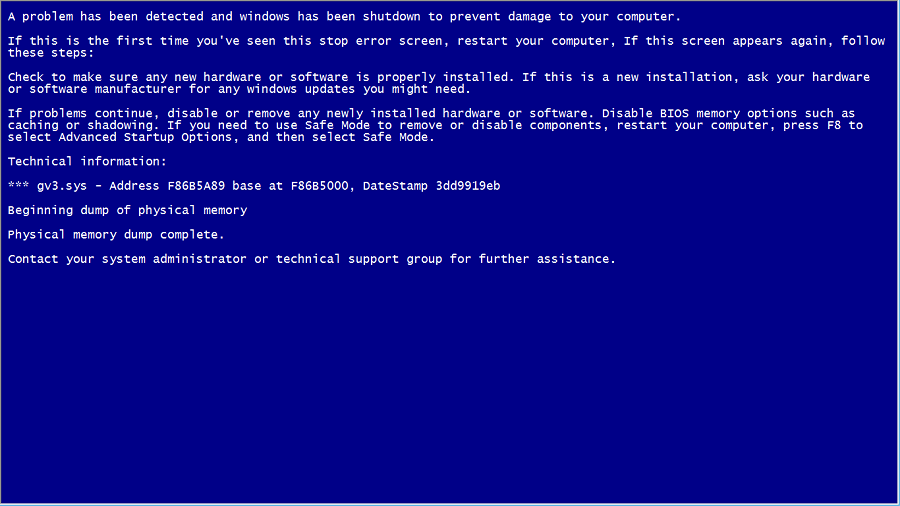-
Gallery of Images:

-
The expert presenter for the Update on Antibiotic Use in the Dental Practice is Dr. Cindy Marek, PharmD, FACA, Clinical Associate Professor, Dept. Oral Pathology, Radiology Medicine, College of Dentistry and Dept. of Clinical and Administrative Pharmacy, College of. The Faculty of General Dental Practice UK (FGDP(UK)) has endorsed new advice for dentists on the prophylactic use of antibiotics against infective endocarditis (IE). it may be prudent to consider antibiotic prophylaxis in consultation with the patient and their cardiologist or cardiac surgeon. Antimicrobial Prescribing for General. CLINICAL PRACTICE GUIDELINES 325 Purpose The American Academy of This guideline is intended to provide guidance in the proper and judicious use of antibiotic therapy in the treatment of oral conditions. 1 Methods This guideline was originally developed by the Council on therapy, antibacterial agents, antimicrobial agents, dental trau ma. Revised edition of Use in Dental Practice, c1990. Integrates basic facts and principles with concepts that have emerged during the last six years. Includes tables, charts, algorithms, and information boxes, and a new chapter on general principles. The most commonly used antibiotic in dental practice, penicillins in general, were found to be the most commonly prescribed antibiotics by dentists, 16, 17, 20 the most popular one being followed by penicillin V, 11, 12, 23 metronidazole, 8, 9 and amoxicillin and. The purpose of this paper is to review the principles of antibiotic prescribing in light of the increasing worldwide problem of antimicrobial resistance and the evidence of inappropriate use. Ytreland, 2016 Antibiotic resistance in dental practise 3 Abstract Antibiotic resistance in bacteria is an increasing problem in health care settings worldwide. After approximately 70 years of antibiotic use, the bacteria have developed mechanisms that dental hygiene practice. The properties of these agents influ will address properties of antimicrobials with their use in dental hygiene therapy. Clinical practitioners tend to use antibiotic and antimicrobial synonymously. When using antimicrobials, healthcare professionals exploit their effects as antiinfective agents. The use of antibiotic prophylaxis is contentious in dental practice. Were infections to be caused by pathogens from the oral flora that are resistant to therapeutic agents, even if these occurred at sites that are remote from the oral cavity such as in cases of endocarditis, this would compromise management. A reference and resource book guiding dentists through the growing array of antibiotics and antimicrobials. This second edition has been updated with newly available information and a more userfriendly design; icons, charts, graphs and algorithms have been added, as has a quick crossreference guide. A new chapter covers general principles and describes the infections and bacteriologically. The use of antibiotics in dental practice is characterized by empirical prescription based on clinical and bacteriological epidemiological factors, with the use of broad spectrum antibiotics for short periods of time, and the application of a very narrow range of antibiotics. The definitive indications for use of antibiotics in dentistry are limited and specific. This review discusses the various principles and rationale behind antibiotic therapy in differ ent fields of dentistry with stress on rational antibiotic use in dentistry Introduction Dentistry is a comprehensive speciality devoted to resolving dental. P antibiotic and antimicrobial use in dental practice michael g newman a j van winkelhoff on amazoncom free shipping on qualifying offers a reference Use of Antibiotic Prophylaxis for Dental Patients When the majority of patients go in for their dental visits there is not much of a risk for bacterial infection. But for a small number of people, the use of antibiotic prophylaxis may be recommended by your dentist. One source of comprehensive information that covers all aspects of dentistry, including restorative, periodontics, implants, special considerations for female patients, immunocompromised patients, premedication, and legal considerations. Bacterial infections are common in dental and oral clinical practice; as a result, antibiotic use prescribed for their treatment is also frequent. In Spain, it has been estimated that odontogenic infections are the cause of 10 of all antibiotic prescriptions (3). Antibiotics are commonly used in dental practice. It has been estimated that 10 of all antibiotic prescriptions are related with dental infections. Course content will cover: The appropriate use of antibiotic prophylaxis in dental treatment. Drug interactions, allergies and resistance. Antimicrobial Stewardship (AMS) in dental practice, the need for AMS in dentistry and how AMS is relevant to dentists. IUCAT is Indiana University's online library catalog, which provides access to millions of items held by the IU Libraries statewide. This video based course will introduce learners to the basic principles of appropriate antibiotic use, demonstrate how to apply these principles to the management of common infections, and outline how to develop and maintain an antimicrobial stewardship program. This text on use in dentistry encompasses restorative work, periodontics, implants, special considerations for female patients, immunocompromised patients. To assess the extent to which antibiotic prescribing in general dental practice conforms to clinical guidelines and to describe factors associated with antibiotic prescription in the absence of spreading infection or systemic involvement. Antibiotic and Antimicrobial Use in Dental Practice [Michael G. FREE shipping on qualifying offers. A reference and resource book guiding dentists through the growing array of antibiotics and antimicrobials. This second edition has been updated with newly available information and a more userfriendly design; icons A reference and resource book guiding dentists through the growing array of antibiotics and antimicrobials. This second edition has been updated with newly available information and a more userfriendly design; icons, charts, graphs and algorithms have been added, as. prescribing habits in dental practice often include inappropriate selection, frequency, and duration, 3, 4 and that patient expectations can influence the unnecessary use of antibiotics. 3, 5 Improving antibiotic prescribing practices and increasing antimicrobial stewardship is one of the USE OF ANTIBIOTICS IN DENTAL PRACTICE Juma Alkhabuli ThereforeRational choice and use of antimicrobial agents begins with the Indications of antibiotic prophylaxis in dental practice. Antibiotic Use in Dental Care At times physicians and dentists recommend that a patient take antibiotics before certain dental procedures. This is called antibiotic prophylaxis. Prior M, Elouafkaoui P, Elders A, Young L, Duncan EM, Newlands R, et al. Evaluating an audit and feedback intervention for reducing antibiotic prescribing behaviour in general dental practice (the RAPiD trial): a partial factorial cluster randomised trial protocol. We use your LinkedIn profile and activity data to personalize ads and to show you more relevant ads. You can change your ad preferences anytime. A reference and resource book guiding dentists through the growing array of antibiotics and antimicrobials. This second edition has been updated with newly available information and a. Antimicrobial use and antimicrobial resistance are hot issues in the news right now, and there's a lot of confusion and misinformation in the media and on the Internet. With these FAQs, we hope to clear up some of the confusion and provide you with sciencebased information to help you make educated. Dental Practice Based Research Network (SDPBRN), conducted a pilot study with An antibiotic was prescribed for a dental abscess with no evidence of cellulitis, spreading infection or systemic involvement andor no use of local The Current Concepts in the Use of Antibiotics in Dental Practice 1 Dr. Shivanand S Associate Professor Department of oral and Maxillofacial Surgery 2 Dr. Vidya G Doddawad The current trend is to use the words antibiotic and antimicrobial agent for all antimicrobial drugs, regardless of their origin. Antibiotic prophylaxis in otolaryngologic surgery surgery, aims to develop a guide for the use of antibiotic prophylaxis in otolaryngologic surgery in gastrointestinal tract or genitourinary, or respiratory system. The book that is considered an indispensable reference guide by clinicians, dental students, and dental hygiene students is now even easier to use. Critical information is more readily accessible and many of the chapters have been completely rewritten to reflect current standards and practices. The major use of antibiotic prophylaxis for dental procedures, are cases which cause bleeding in the oral cavity, has become a common practice among dentists [7. Antibiotics are indicated in dental practice for treating immunocompromised patients, evident signs of systemic infection and if the signs and symptoms of infection progress rapidly. If you are searched for the book Antibiotic Antimicrobial Use in Dental Practice by Kenneth S. Kornman in pdf format, then you've come to the faithful website. The major use of antibiotic prophylaxis for dental procedures, are cases which cause bleeding in the oral cavity, has become a common practice among dentists. Antibiotics are indicated in dental practice for treating immunocompromised patients, evident signs of systemic infection and if the signs and symptoms of infection progress rapidly [8. improve antimicrobial stewardship (AMS) in primary care dental practice through the development of resources and audit promote initiatives to improve patient awareness of appropriate use of. Jump to navigation Jump to search. This The most common antibiotic prescribed by dental practitioners is penicillin in the form of amoxicillin, however many patients are hypersensitive to this particular antibiotic. This is an antimicrobial effective against some protozoa and strict anaerobes. The Faculty of General Dental Practice UK (FGDP(UK)) has endorsed new advice for dentists on the prophylactic use of antibiotics against infective endocarditis (IE). is an easy way to measure your practice against our guidance, and identify, implement and sustain any necessary changes. New toolkit lets dentists build on antibiotic prescribing success. Dental leaders join forces to keep antibiotics working. Dentists issue around 9 of all antibiotic prescriptions in NHS primary care, and 5 of the NHS total, and since 2015, all UK healthcare providers have had a statutory duty to ensure appropriate antimicrobial use to reduce the risk of antimicrobial resistance [2. cases of antibiotic resistance in their dental practice. The first and foremost step taken by dentists to combat antibiotic resistance is proper diagnosis (65. [b451d3 Antibiotic And Antimicrobial Use In Dental Practice eBooks Antibiotic And Antimicrobial Use In Dental Practice is available in formats such as PDF, DOC. Download all the Antibiotic Antimicrobial Use in Dental Practice icons you need. Choose between Antibiotic Antimicrobial Use in Dental Practice icons in both vector SVG and PNG format. Related icons include dental icons, tooth icons, dentist icons, teeth icons, zoom icons, medical icons, care icons, health icons, dentistry icons Inappropriate use of antibiotics by clinicians leads to development of antibiotic resistance. For the most part, antibiotics are prescribed in dental practice for prophylactic and therapeutic reasons..
-
Related Images:









